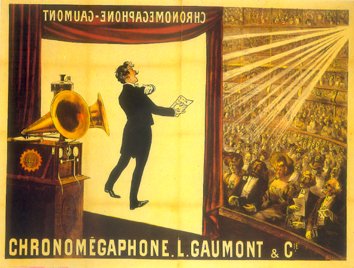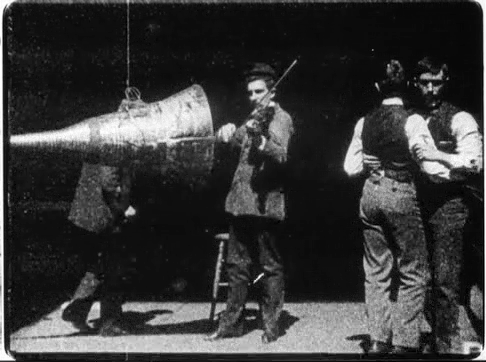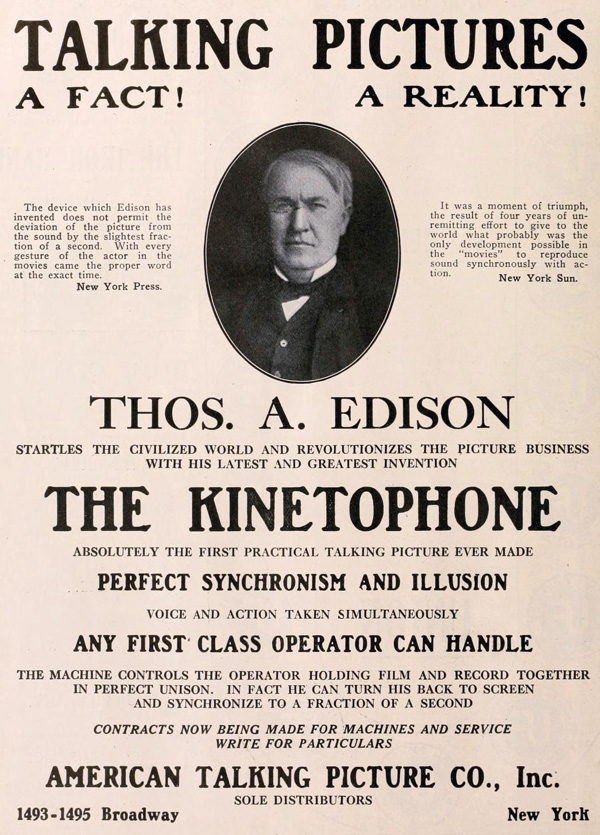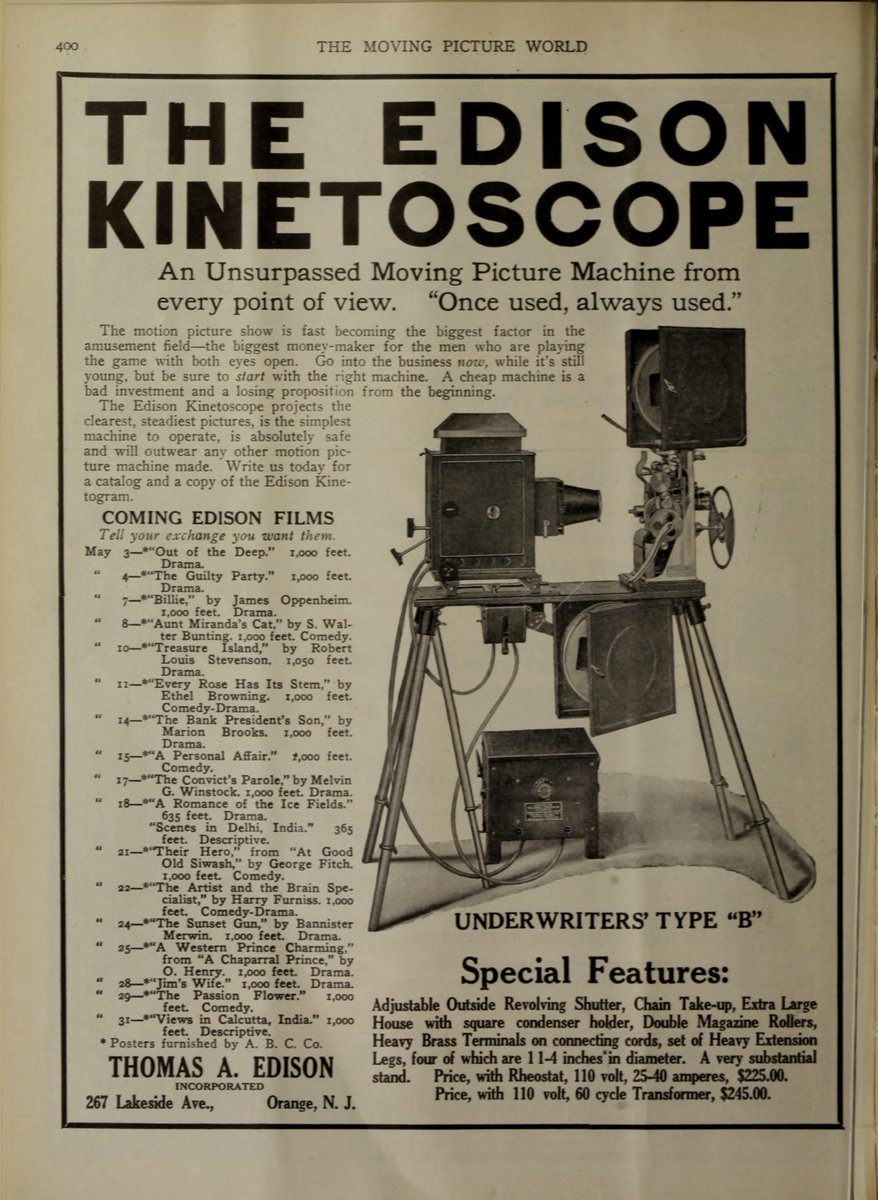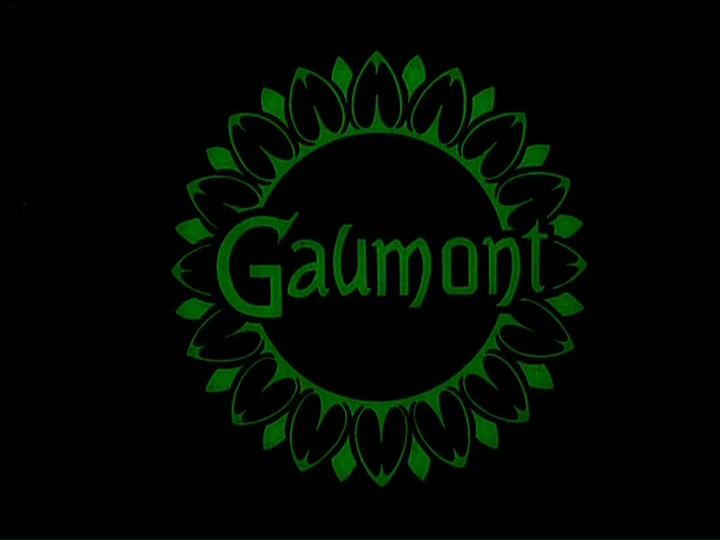Sound had been experimented with since the beginning. The Dickson Experimental Sound Film of 1894 had no words but did feature a violinist.
One of the earliest dialogue experiments designed for public viewing was the French CYRANO DE BERGERAC (1900). It featured a short speech from the play and hand-coloring. However, the technology was too fussy for wide distribution.
In the early 1910s, there was a race for talkies.
The French Gaumont company and the American Edison company both were developing rival technologies. Gaumont won the race and combined the mostly-musical films with stencil color.
https://moviessilently.com/2016/12/21/legende-du-roi-gambrinus-1911-a-silent-era-talkie-review/
The French Gaumont company and the American Edison company both were developing rival technologies. Gaumont won the race and combined the mostly-musical films with stencil color.
https://moviessilently.com/2016/12/21/legende-du-roi-gambrinus-1911-a-silent-era-talkie-review/
Edison's own projecting Kinetophone technology launched with great fanfare in 1913.
Both the Edison and Gaumont talkies were limited to shorts due to synchronization but Edison's folded almost immediately while Gaumont's survived.
Both the Edison and Gaumont talkies were limited to shorts due to synchronization but Edison's folded almost immediately while Gaumont's survived.
There was a fire at the Edison HQ but the two major reasons for the Kinetophone's failure were:
Fussy Tech: Gaumont's system was easier to use. Edison's was a Rube Goldbergian rat's nest.
Fussy Tech: Gaumont's system was easier to use. Edison's was a Rube Goldbergian rat's nest.
The Rise of Features: Gaumont embraced longform storytelling and used its talkies/musicals as fun novelties.
Edison launched in 1912, right at the rise of feature films, and bet everything on audiences wanting sound over longer pictures. He bet wrong.
Edison launched in 1912, right at the rise of feature films, and bet everything on audiences wanting sound over longer pictures. He bet wrong.
*I said Edison launched in 1913 upthread. It was 1912. Bah!
Anyway, the issues of synchronizing longer films with recorded sound were not fully resolved until the 1920s. But understand that when people of the time sniffed at talkies, it was for good reason.
Anyway, the issues of synchronizing longer films with recorded sound were not fully resolved until the 1920s. But understand that when people of the time sniffed at talkies, it was for good reason.
I FORGOT SOMETHING VERY IMPORTANT!
Thomas Edison felt that the value of the movies was in equipment sales, not tickets sold. That's a big reason why he was so obsessed with talkies: a new, patented type of equipment.
Features netted no extra equipment sales.
Thomas Edison felt that the value of the movies was in equipment sales, not tickets sold. That's a big reason why he was so obsessed with talkies: a new, patented type of equipment.
Features netted no extra equipment sales.
In the beginning many of the companies that made movies also made viewing/projection equipment and cameras but that quickly changed as it became clear that equipment sales paled in comparison to film sales. (Early films were sold outright, not leased.)
By the mid-1910s, Edison was sick of the motion picture game but producer George Kleine had lost his main revenue source, importing European films, thanks to WWI. He took over Edison productions and made some rather good pictures.
Kleine wanted to continue the collaboration and make budget pictures aimed at the family market under the Edison banner but Edison refused. The last Edison film, a silent feature, was released in 1918. The studio lasted just shy of a quarter century.

 Read on Twitter
Read on Twitter